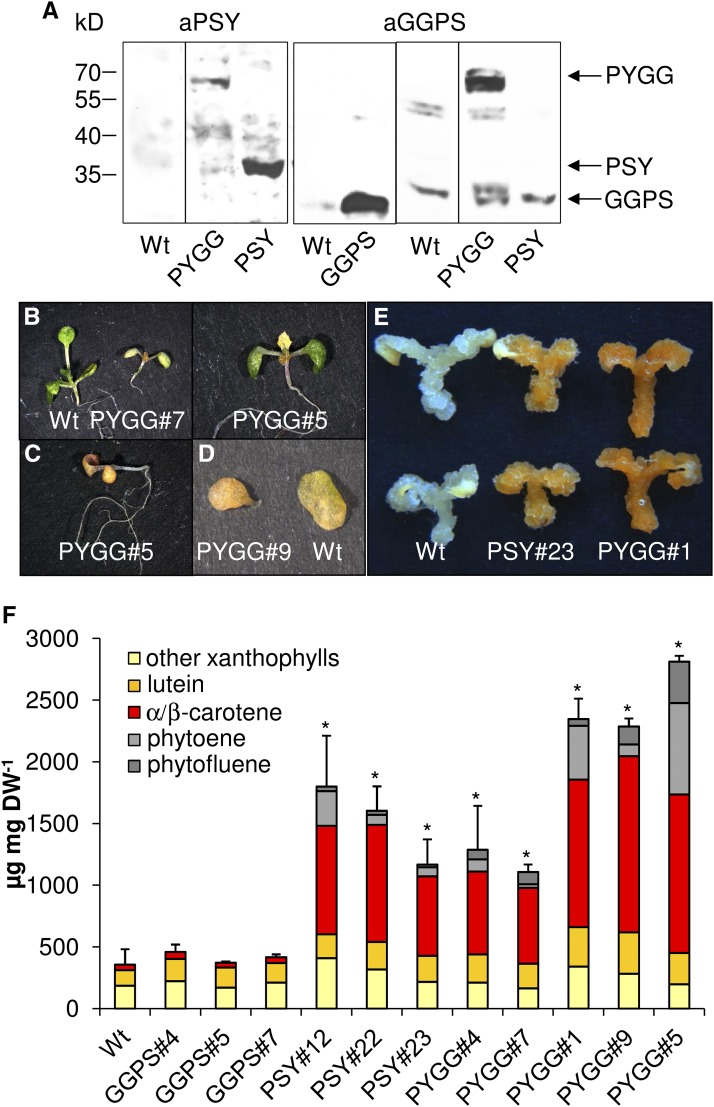Figure 7.
Carotenoid amounts in PYGG-overexpressing calli. Arabidopsis GGPS11, PSY, and the fusion protein PYGG were constitutively overexpressed in Arabidopsis. Callus was developed from seeds for 5 d in the light, followed by two weeks etiolation on callus-inducing medium. A, Detection of GGPS11, PSY, and PYGG in calli. Callus protein extracts from the wild type and one line overexpressing GGPS11 (GGPS), PSY, and PYGG were probed with anti-PSY antibodies (aPSY) and anti-GGPS11 (aGGPS) antibodies, respectively. Arrows indicate band positions corresponding to PYGG, PSY, and GGPS11. B to D, Phenotype of wild-type and PYGG-expressing seedlings grown for 7 d under long-day conditions (B, left and right), dark-grown seedlings (C), and detached primary leaves of dark-grown seedlings (D). E and F, Representative images (E) and carotenoid contents (F) of calli. Results are means ± SEM of three biological replicates. Asterisk indicates significant difference compared to that in the wild type (Student’s t test, P < 0.05).

